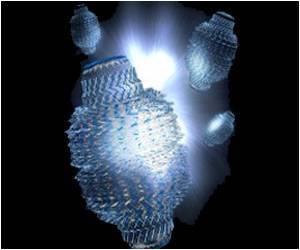People often have trouble in identifying the accurate shape of dynamic and fluctuating objects.

The sugar chains are flexible accessories decorating the surface of proteins. These variable accessories actually mediate protein-protein communication and even determine the fates of the protein. In other words, the sugar chains serve as transformable "code" that governs the protein's action in our body. For example, it has been revealed that particular sugar chains modifying lipids on cell surfaces offer acceptor sites for viral infections and trigger conformational changes of proteins involved in neurodegenerative disorders including Alzheimer's disease. Hence, decoding the sugar codes is desired not only for better understanding the molecular mechanisms behind a variety of biological processes but also for designing new drugs targeting these processes. However, conformational characterization of the sugar chains has been hampered by their dynamic properties.
Many experimentalists and theorists have taken on the challenge to solve this problem. NMR spectroscopy is one of the most promising experimental approaches for conformational analyses of the sugar chains because of its ability to determine geometrical arrangements of the atoms constituting biomolecules in solution. However, if a biomolecule undergoes rapid motion as in the case of the sugar chains, NMR provides information averaged over all its possible conformational snapshots. By contrast, a molecular dynamics simulation can provide a movie that describes the dynamic behaviors of sugar chains. However, the simulation results should be experimentally validated to guarantee their accuracy.
Kato's research group successfully combined these two complementary approaches and thereby captured distinct conformational snapshots of two very similar sugar chains in dynamic motion. This success was achieved on the basis of several key breakthrough techniques. Firstly, the group employed genetically engineered yeast cells for production of homogeneous oligosaccharides in sufficient quantity with stable isotope labeling, which is necessary for detailed NMR analyses. Secondly, a paramagnetic probe was introduced specifically at one end of the oligosaccharides in order to obtain atomic-distance information. Thirdly, they used the high-field NMR spectrometers and the supercomputer facility operated by the Institute for Molecular Science.
As Professor Kato notes, "This success enables us quantitative and highly sensitive characterization of minor but biologically relevant conformational species of sugar chains and will open the door for observing the dynamic behavior of flexible biomolecules as potential drug targets".
Advertisement










